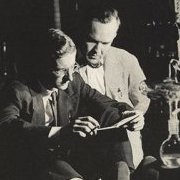-
Posts
4586 -
Joined
-
Last visited
-
Days Won
12
Content Type
Profiles
Forums
Events
Everything posted by hypervalent_iodine
-
-
It’s in solution as a nitrate salt. Please stop whatever it is you are trying to do and find a way to safely dispose of the reaction mixture. You are not equipped to be performing these reactions.
-
For the love of god, at least put some gloves on! I would hazard that your mercury (assuming you mean you added elemental mercury?) has reacted, not dissolved, which might also explain the brown gas you have forming there (which is toxic, by the way). Please do not do things like this if you do not know what you are doing, and do not have access to appropriate safety controls. A reaction like this should ideally be performed in a fume hood, and you should not be working with it without full PPE. Mercury is quite toxic, and nitric acid isn’t super friendly either. If you don’t have a good reason to need it, I would strongly recommend not working with it.
-

Microbiome and heavy metals effects in auto inmune diseases
hypervalent_iodine replied to Teoremajic's topic in Speculations
! Moderator Note And what has this got to do with the title of your thread? -

Microbiome and heavy metals effects in auto inmune diseases
hypervalent_iodine replied to Teoremajic's topic in Speculations
! Moderator Note I appreciate that it is not your first language, but you are required to summarise your ideas here in English. I have also moved this to Speculations, where you are further required to present and back your statements up with evidence. -

Poor Agricultural Choices in Drought Regions
hypervalent_iodine replied to iNow's topic in Sculptures made of almonds
A controversial opinion, but your logic is sound. I was expecting far more marzipan from you! Disappointing! -

Predicting Further Values in a Set of Data
hypervalent_iodine replied to IshaanM8's topic in Analysis and Calculus
! Moderator Note One thread per topic, please. -

CH3OH + 2CuO Which reaction is true?
hypervalent_iodine replied to katarina's topic in Organic Chemistry
I’m not overly familiar with using copper in this way, but I believe that you would typically use CuO catalytically in the presence of O2 (rather than stoicheometrically) to give the aldehyde. I don’t think you would get the acid, but I am not 100% sure. -
1. I am not sure what you want here. Have you encountered a problem in your synthesis? What procedure were you following? 2. I assume you mean spots on a TLC? If you can see two distinct spots you should be able to separate them, provided the difference in Rf is sufficient.
-
Is this homework? If so, you’ll need to show some attempt at working out and to detail where exactly you are struggling.
-

explain the Fizeau experiment by the Aether method
hypervalent_iodine replied to thomaspham01's topic in Relativity
! Moderator Note Please note that this is an English speaking forum. We understand language barriers can be difficult to navigate, but our members are fairly accomodating and your history here shows you are able to speak some English. Regardless, I am closing this thread since you already have one open from several years ago. Please post there. -

Observation of alternative approach for dark matter / energy
hypervalent_iodine replied to Jolorum_AV's topic in Speculations
! Moderator Note As per Strange's comment and swansont's previous mod note, this is being closed. -
There are a few ways. Ullman, as you suggested, Buchwald Hartwig coupling, or Chan Lam. Organic portal has an overview of these, plus literature examples. https://www.organic-chemistry.org/synthesis/C1O/biarylethers.shtm
-
Are you actually trying to make this?
-
Not necessarily; with careful addition and control of equivalents I should think the esters would hydrolyse over the imide. A carbonate base may also do the trick.
-
I didn’t say that. I said it can’t be done with an alkoxide. If you do the arrow pushing on the scheme you drew you should hopefully be able to see why it would never work. I also went on to say that in order to do the reaction you need hydroxide or some other aqueous base, but you can also use acid. I think hydroxide base would work fine, however.
-
I’d say your main problem is that you can’t hydrolyse the ester with an alkoxide like that. You need a hydroxide, or you need to do it under acidic conditions.
-
Q-reeuss has been permanently banned for spamming the forum with nonsense.
-

Global/Generalized Sagnac Effect Formula
hypervalent_iodine replied to sandokhan's topic in Speculations
! Moderator Note Since the OP appears impervious to reason and genuine scientific rebuttal, this thread is closed. -
Could you show your attempts at solving the question?
-
They are all possible, depending on the circumstance. There are some elements that will only exist in one oxidation state other than 0, and from those you can normally garner the oxidation state and charge of other elements. In your case my suspicion is that you are only being asked to look at the more easily explained ions that result from the gain or loss of electrons to satisfy the octet. In the case of sulfur, that would make the ion 2-, since it only needs to gain 2 electrons in order to do this.
-

Genesis 1&2 The Beginning - Based on the Scripture
hypervalent_iodine replied to 2Pillars's topic in Religion
! Moderator Note Quit the preaching. Thread closed.


